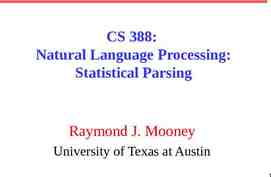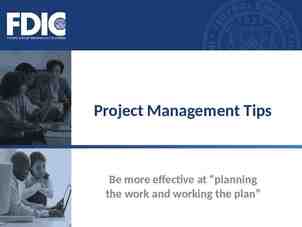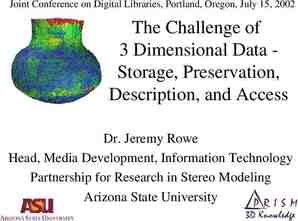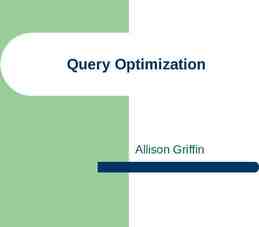Teterboro Airport Part 150 Noise/Land Use Compatibility
20 Slides2.22 MB

Teterboro Airport Part 150 Noise/Land Use Compatibility Study Teterboro Users Group Meeting July 19, 2017 Teterboro Airport 1 TEB Part 150 Study TUG Presentation – July 19, 2017

Agenda Introductions Part 150 Overview Noise Exposure Map (NEM) Noise Compatibility Program (NCP) Discussion Study Schedule 2 TEB Part 150 Study TUG Presentation – July 19, 2017

Generalized Part 150 Study Process / Schedule 3 TEB Part 150 Study TUG Presentation – July 19, 2017

Final TEB Noise Exposure Maps (NEMs) 4 TEB Part 150 Study TUG Presentation – July 19, 2017

Final NEM Dwelling Unit and Population Counts Year Metric Dwelling Units within DNL Contour Interval 65-70 2016 2021 70-75 Population within DNL Contour Interval Total 65-70 70-75 Total Single Family 88 0 88 213 0 213 Multi-Family 51 0 51 123 0 123 Mobile Home 44 8 52 106 19 125 Total 183 8 191 442 19 461 Single Family 83 5 88 201 12 213 Multi-Family 49 2 51 119 5 124 Mobile Home1 48 9 57 116 22 138 Total 180 16 196 436 39 475 Note: Population 2.42 people times number of residential units 5 TEB Part 150 Study TUG Presentation – July 19, 2017

Noise Compatibility Program Development Process Step 1: Identify Incompatible Land Uses Existing conditions Noise Exposure Map Forecast conditions Noise Exposure Map Step 2: Consider Noise Abatement Strategies Reduce exposure over incompatible uses Limit growth in exposure over incompatible uses Step 3: Consider Land Use Strategies Mitigate residual incompatible uses Prevent introduction of new incompatible uses Step 4: Consider Programmatic Strategies Implement and promote measures Monitor and report on effectiveness Update NEMs and revise NCP as appropriate Analysis and Selection Process Applied in Steps 2 - 4 Evaluate effectiveness of each measure in addressing objectives Evaluate feasibility (operational, safety, economic, etc.) Select preferred “package” of measures Identify implementation schedule, responsibilities, budget, funding sources, etc. If not recommended, document reasons 6 TEB Part 150 Study TUG Presentation – July 19, 2017

Major NCP Strategy Options within Each Category Noise Abatement Strategiess Noise abatement flight tracks Preferential runway use Arrival/departure procedures Airport layout modifications Noise barriers (presented today) Runup enclosures Use restrictions (will be addressed at TAC 13) Other actions proposed by stakeholders Land Use Strategiesfff Mitigation Land acquisition Sound insulation Avigation easements Prevention Land use controls Zoning Building codes Comprehensive plans Real estate disclosures Other actions proposed by stakeholders Programmatic Strategies Implementation tools (rules, regulations, ordinances, etc.) Promotion, education, signage, etc. Monitoring Reporting NEM updating NCP revision Other actions proposed by stakeholders 7 TEB Part 150 Study TUG Presentation – July 19, 2017

“Partial” DNL Contributors by Operational Category Jet Operatio ns Depart ure Operati ons Day Departu re Operatio ns Night Depart ure Operati ons Most Effective Noise Abatemen t Alternativ es Results: Jet operations dominate total DNL Departures contribute more to total DNL than arrivals Daytime operations contribute slightly more than nighttime TEB Part 150 Study TUG Presentation – July 19, 2017 8

NCP Operational Noise Abatement Proposals Category Measure Preferential runway use Shift Runway 6 night arrivals to Runway 1 – Existing Program Shift Runway 24 night departures to Runway 19 – Existing Program Noise abatement flight paths, arrival procedures, and departure procedures Airport layout Noise Benefit Small benefit (reduction of 8 homes with a 25% shift) Small benefit for a small increase (10%), no benefit at a higher increase (25%) Shift Runway 1 night departures to Runway 6 Combination of Increased arrivals to Runway 1 and departures from Runway 19 No Benefit as increased dwelling units north of Runway 24 Little benefit as increases in units in the mobile home park offset reductions of units along Route 17 Runway 19 Quiet Visual approach FAA discontinued procedure for use after publication due to the complexity of flying it Runway 24 noise abatement departure to 230 heading at night Reduction of 15 dwelling units in total, 6 of which are within the 70 DNL contour Noise abatement departure procedures - NBAA highdensity NADP Reduction of 19 dwelling units if used for 88% of of jet departures not held down at or below 3,000 ft. Runway 1 jet departures starting at Taxiway K intersection Relocation of maintenance run-ups to center of airfield along Taxiway Q Reduction of 28 dwelling units in the mobile home park Reduction of 5 dwelling units in the mobile home park 9 TEB Part 150 Study TUG Presentation – July 19, 2017

Preferential Runway Use Shift 25% of Rwy 6 Night Arrivals to Runway 1 Shift 25% of Rwy 24 Night Departures to Rwy 19 These figures are not official Noise Exposure Maps. They are hypothetical cases for deliberative purposes only. TEB Part 150 Study TUG Presentation – July 19, 2017 10

Preferential Runway Use (cont’d) Shift 25% of Rwy 1 Night Departures to Rwy 6 Shift 25% of Rwy 6 Night Arrivals to Rwy 1 and 25% of Rwy 24 Night Departures to Rwy 19 These figures are not official Noise Exposure Maps. They are hypothetical cases for deliberative purposes only. TEB Part 150 Study TUG Presentation – July 19, 2017 11

Preferential Runway Use (cont’d) We looked at increasing use of the Preferential Runway Use at night TRACON does not expect the airspace situation to change to allow for more Runway 19 departures at night Overall the existing program has a benefit and should remain in place 12 TEB Part 150 Study TUG Presentation – July 19, 2017

Noise Abatement Flight Track: 90% of Night Jet Departures on Runway 24 Assigned 230 Heading Existing track shown is the jet backbone track with the highest usage The new 230o departure heading track turns after the end of the runway Slight reduction in residential land within the 70 DNL contour Moderate reduction in residential land within the 65 DNL contour These figures are not official Noise Exposure Maps. They are hypothetical cases for deliberative purposes only. TEB Part 150 Study TUG Presentation – July 19, 2017 13

NBAA High-Density NADP 14 TEB Part 150 Study TUG Presentation – July 19, 2017

Departure Procedure: Use of NBAA High-Density NADP to Jet Departures Not Held at or Below 3,000’ Limiting application to departures not held at 3,000’ results in approximately 52% of all jet departures using high-density NADP North Jersey Vineyard Church to the north of Runway 1/19 is removed from 65 DNL Pulls the 70 DNL contour onto airport property Reduces residential land within 65 DNL under Runway 24 departures These figures are not official Noise Exposure Maps. They are hypothetical cases for deliberative purposes only. TEB Part 150 Study TUG Presentation – July 19, 2017 15

Airport Layout: Shift the start-of-takeoff-roll point to the Taxiway K intersection for all of Runway 1 jet departures at night Would lose approximately 550’ of takeoff distance, but takeoff distance is still longer than Runway 6 Voluntary procedure would permit aircraft to use full runway length if needed Taxiway K intersection Normal, full-length start-oftakeoff-roll location Noticeable reduction of contour extent over mobile home park – reduction of 28 dwelling units These figures are not official Noise Exposure Maps. They are hypothetical cases for deliberative purposes only. TEB Part 150 Study TUG Presentation – July 19, 2017 16

Airport Layout: Location of All Maintenance Runups in the Center of the Airfield along Taxiway Q Proposed runup location along Taxiway Q north of Taxiway G Provides reduction of the 70 DNL contour south of Route 46 Using 60o and 240o headings – with the same split as the existing locations There is a slight benefit to the mobile home park (reduction of five homes) These figures are not official Noise Exposure Maps. They are hypothetical cases for deliberative purposes only. TEB Part 150 Study TUG Presentation – July 19, 2017 17

Dwelling Unit and Population Analyses Category Scenario 65 – 70 DNL 70 DNL Total Green highlight is net reduction Red highlight is net increase Dwelling Unit Change from Baseline Units Pop’n Units Pop’n Units Pop’n 65-70 Population Change from Baseline 70 Total 65-70 70 Total Baseline 2021 Baseline Operations 180 436 16 39 196 475 - - - - - - Runway Use Shift 25% of Rwy 6 Night Arr.s to Rwy 1 Shift 25% Rwy 24 Night Dep.s to Rwy 19 Shift 25% of Rwy 1 Night Dep.s to Rwy 6 Shift 25% of Rwy 6 Night Arr.s to Rwy 1 and 25% of Rwy 1 Night Dep.s to Rwy 19 179 189 181 433 457 438 9 10 12 22 24 29 188 199 193 455 481 467 -1 9 1 -7 -6 -4 -8 3 -3 -3 21 2 -17 -15 -10 -20 6 -8 183 443 10 24 193 467 3 -6 -3 7 -15 -8 90% Night Rwy 24 Jet Dep.s Turn to 230 171 414 10 24 181 438 -9 -6 -15 -22 -15 -37 100% of RW 1 Night Departures Start at Twy K 161 390 7 17 168 407 -19 -9 -28 -46 -22 -68 All maintenance runups use central location 179 433 12 29 191 462 -1 -4 -5 -3 -10 -13 NBAA High- Use by 88% of Jet Departures Not Held Down Density NADP at or Below 3,000 ft. 168 407 9 22 177 429 -12 -7 -19 -29 -17 -46 Flight Tracks Layout Note: Noise abatement procedures must be studied and approved by the FAA for safety and efficiency before any proposed procedure can be implemented. TEB Part 150 Study TUG Presentation – July 19, 2017 18

Sensitive Receptors within 65 DNL Category Scenario Baseline 2021 Baseline Operations Bergen County Learning Tree Technical School Academy Daycare (Sound insulated, so compatible) Blue checkmark indicates site is wholly or largely within DNL 65 Catalyst Agape Church (formerly North Jersey Vineyard Church) Jersey College School of Nursing (Sound insulation status unknown) Shift 25% of RW 6 Night Arrivals to Runway 1 Shift 25% RW 24 Night Departures to Runway 19 Runway Use Shift 25% of RW 1 Night Departures to Runway 6 Shift 25% of RW 6 Night Arrivals to Runway 1 and 25% of Runway 1 Night Departures to Runway 19 Flight Tracks 90% Night Rwy 24 Jet Dep.s Turn to 230 Layout 100% of RW 1 Night Departures Start at Twy K NBAA High- Use by 88% of Jet Departures Not Held Down at or Below Density 3,000 ft. NADP Removed from contours Note: Noise abatement procedures must be studied and approved by the FAA for safety and efficiency before any proposed procedure can be implemented. TEB Part 150 Study TUG Presentation – July 19, 2017 19

Next Steps Finalize operational recommendations Develop land use/mitigation recommendations Develop programmatic recommendations Draft NCP will be submitted to FAA in August of 2018 20 TEB Part 150 Study TUG Presentation – July 19, 2017






